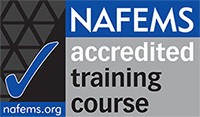| CTDkn2 | State the Time Hardening and Strain Hardening Laws, based on Norton s Power Law, for primary creep. |
| CTDkn3 | State how typical creep laws depend on temperature. |
| CTDkn4 | List the range of creep and time-dependent constitutive models available in any finite element used. |
| CTDkn5 | Identify the extent to which your application software allows modification of creep solution parameters. |
| CTDkn6 | State the basic definitions of stress relaxation and creep. |
| CTDco1 | Describe and illustrate a standard creep curve for steels, highlighting the steady state regime. |
| CTDco2 | Using the standard creep curve, describe the effects of (i) increasing stress level and (ii) removing the stress. |
| CTDco3 | Describe different ways of presenting creep data. |
| CTDco4 | Explain the term Stress Redistribution in a structure subject to creep under load. |
| CTDco5 | Discuss the term Creep Rupture and illustrate how data related to this is commonly presented. |
| CTDco6 | Describe how a creep damage law and life fraction rule are used. |
| CTDco7 | Explain, in general terms, the creep solution process as typically implemented in finite element systems. |
| CTDco8 | Outline how the Creep Strain Tolerance and change in stress level during a time interval are used to control the accuracy of creep calculations. |
| CTDco9 | Contrast the creep solution procedure with the procedure commonly employed for plasticity. |
| CTDco10 | Discuss the complexities arising from a multiaxial stress state and illustrate how these are normally handled. |
| CTDco11 | Discuss the advantage and validity of using a stiffness matrix that doesn't vary during the creep solution. |
| CTDco12 | Discuss the theoretical solution for steady state creep stresses for a beam in bending. |
| CTDco13 | Discuss the theoretical solution for steady state creep stresses for a thick cylinder under internal pressure. |
| CTDco14 | Explain why it is important to carefully consider the output required from a finite element system for this type of analysis. |
| CTDco17 | Contrast Explicit and Implicit Creep Integration. |
| CTDco18 | Discuss how the interaction of creep and fatigue is generally handled in design standards or Codes of Practice. |
| CTDco19 | Describe why a creep analysis is necessary for relevant components in your organisation or sector. |
| CTDap1 | Define creep constitutive data as appropriate. |
| CTDap2 | Use FEA to obtain creep solutions for a range of typical components. |
| CTDap3 | Use facilities to enter user-defined creep constitutive laws as appropriate. |
| CTDap4 | Conduct effective creep analyses for stiffness and strength. |
| CTDap6 | Conduct effective creep - fatigue interaction studies. |
| CTDan1 | Analyse the results from time dependent analyses of typical pressure components and determine whether they satisfy relevant design standard or code of practice r... |
| CTDsy1 | Plan a series of simple benchmarks in support of a more complex creep or time dependent analysis. |
| CTDsy2 | Plan modelling strategies for time dependent problems. |
| CTDsy3 | Prepare an analysis specification for a time dependent analysis, including modelling strategy, highlighting any assumptions relating to geometry, loads, boundary... |
| CTDev1 | Select appropriate idealisation(s) for components / structures, that are consistent with the objectives of the time dependent analyses. |
| CTDev4 | Select appropriate solution schemes for time dependent problems. |






